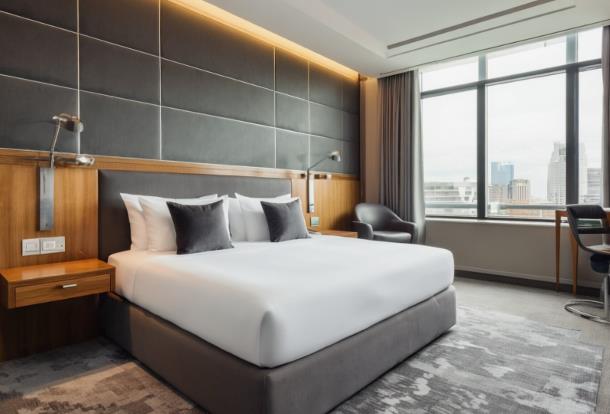ChinaTravelNews - The hospitality industry in China continues to face “soft market conditions”, but major operators aren’t perturbed at this juncture.
As an established group in this sector, economy hotel chain Home Inns & Hotels Management believes that its strength is its stable underlying business which can perform under current market conditions, and forge ahead to capitalize on available opportunities in the long-term. Speaking during Q4 Earnings Call, Home Inns & Hotels Management CEO David Sun stated that even though a quick rebound isn’t round the corner, the team is optimistic about the long-term perspective of the travel and lodging market in China.
Considering the current status of the external environment, Sun said the objective is to “balance the speed of new hotel development with profitability”, and dwell more on the midscale hotel segment.
Transformation
The company is poised to establish itself as a franchised-and-managed hotels business. By the end of Q4, franchised-and-managed hotels represented 65% of total hotels in operation, up from 60% in the same period a year ago. As Sun has already indicated in the past, this strategy is paying off. It has resulted in sustained profitability and margin expansion over the past few quarters. The development pipeline for this business remains robust.
The franchised-and-managed model is attractive for: no capital requirements and high-margin fee revenue. Under this model, the franchisee owns or rents property and invests in conversion CapEx and ongoing maintenance. For its part, Home Inns Group franchises brand and finalizes general managers to manage the property. The hotel chain gains one-time initiation fee and ongoing franchise and management fee. In return, the franchisee retains profits after fees and operating expenses.
Out of the 401 projects that are in the development pipeline, the break-up is: 201 hotels contracted or under construction (173 of which were franchised-and-managed hotels) and 200 hotels under due diligence (all of which were for franchised-and-managed hotels), shared the group.
In all, the company consolidated its portfolio with net addition of 429 hotels, including the opening of 486 new hotels and the closure of 57 hotels. The team operated 2,609 hotels across 335 cities in China under four brands.
Protecting margin
It would be interesting to assess the situation especially if the feeble RevPAR condition stretched for a longer duration this year.
Sun said that the franchise-focused strategy has contributed in protection of margin and bottom line via higher margin revenue. He also added that the company surpassed its new hotel opening target for the entire year and this was “driven by continued strong demand from franchise partners”. The group witnessed decline in key metrics, too. Occupancy rate decreased 4.4 percentage points Q4 from the same period a year ago.
Revenue from franchised-and-managed hotel for Q4 was RMB244.2 million, an increase of 17.4% Y-o-Y. For the full year, revenues were RMB940.9 million, an increase of 22.9% Y-o-Y.
Also, it would be important for the group to take this model forward in lower tier cities in a prudent manner.
Referring to the franchise program, May Wu, chief strategy officer, did acknowledge that it remains a standardized franchise program, whereas the company has high requirements for the franchise property conversion. And it should be conforming to the standard format.
“We think, in a slower economic environment, especially when it comes to lower tier cities, it’s not fair, and we also want to make sure that are happy with their investments, and they can recuperate their investments within the timeframe that our hotels normally would,” said Wu. So the group has worked out its Home Alliance program (a B2B service fee-based platform), which is in its early stage. It is a hotel membership based marketing alliance and corporate service program, through which the chain helps hotel operators in different ways from its standardized franchise program.
“I believe that this kind of program, as well as other new programs that we are developing, whereas perhaps where there will be a balance between the initial investment, versus the quality of the hotel, versus how we look at those hotels, versus Home Inn currently, the Home Inn family of branded hotels,” said Wu.
Strong brand
Providing an insight into brand portfolio, Sun said that mature hotel sales performance and operating metrics was as expected. Home Inns & Hotels is eyeing expansion of Yitel hotels in the coming quarters. The plan is to commit more resources to the mid-scale hotel segment. Plus, a new brand, Homeinn Plus, is being rolled out too.
One of the goals of pursuing a multi-brand strategy is to strengthen customer loyalty and brand value.
At the end of 2014, the frequent-guest program reached a record high of 23 million unique active non-corporate members, an increase of 36.1% compared to 16.9 million at the end of 2013.
Over 2.6 million users have downloaded Home Inn mobile app as of December 31, 2014. As a proportion of total room bookings, bookings the mobile app accounted for 21% of total bookings in the fourth quarter. An additional 3% of total room bookings were from WeChat.
(Report by Ritesh Gupta)




